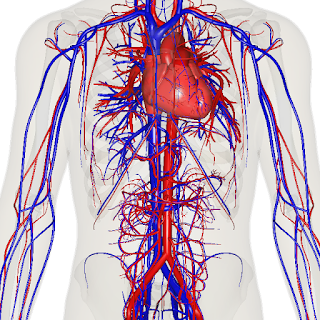Archive for November 2017
MEAP and its Implications for Cardiovascular Research
 Ensemble analysis averages raw waveform signals through lining up their peaks, allowing researchers to mitigate noise or potential outside artifacts. Researchers Cieslak et al. (2017) from University of California, Santa Barbara, identified and assessed a new open source tool that conducts ensemble analysis of cardiovascular data. The moving ensemble analysis pipeline (MEAP) builds on classic collection and analysis tools; not only in detecting cardiovascular state during an experiment, but also in measuring how cardiovascular cycles change overtime.
Ensemble analysis averages raw waveform signals through lining up their peaks, allowing researchers to mitigate noise or potential outside artifacts. Researchers Cieslak et al. (2017) from University of California, Santa Barbara, identified and assessed a new open source tool that conducts ensemble analysis of cardiovascular data. The moving ensemble analysis pipeline (MEAP) builds on classic collection and analysis tools; not only in detecting cardiovascular state during an experiment, but also in measuring how cardiovascular cycles change overtime.Cardiovascular measurements are typically averaged to reduce noise, but traditional measurement methods made capturing changes in cardiovascular cycles restricted to a select window of time. This makes it difficult to assess fast changes with traditional cardiovascular ICG data. With MEAP, variability is better analyzed, allowing it to become a more accurate dimension of assessment.
In assessing MEAP’s viability, researchers measured two participants as they completed four different tasks. The experiment began and ended with a random dot kinetogram task allowing for a baseline control of cardiovascular activity. This was followed by the “cold presser” and “Valsalva,” two tasks that were expected to induce strong physiological reactions. Another task included a video game, seen as having less predictive effects.
Two subjects were measured for ECG and other physiological signals as they completed the four physical and cognitive tasks. BIOPAC’s research solutions included ECG100C utilized for ECG, NICO100C-MRI to collect ICG signals, and NIBP100D CNAP Monitor 500 to record blood pressure. Data was gathered and measured with MP Research System with AcqKnowledge software.
The results pointed to changes typical cardiovascular measures wouldn’t be able to describe. This was seen during the Valsalva maneuver, where rapid baroflex changes occurred. It was also found cardiovascular data varied immensely while performing repetitive tasks.
The paper recognizes MEAP’s potential for rapidly advancing findings that use cardiovascular data. The authors point to this tool’s potential ability for exploring new areas of study that have been difficult to quantify in the past, such as linking cardiovascular reactivity to motivation. In acknowledging the benefits of MEAP, the authors stress the importance of not overstepping smaller aspects of acquisition, such as poorly attached electrodes or imbalanced experiment design. Overall, this paper recognizes, analyzes, and validates this exciting new development in the field of cardiovascular research.